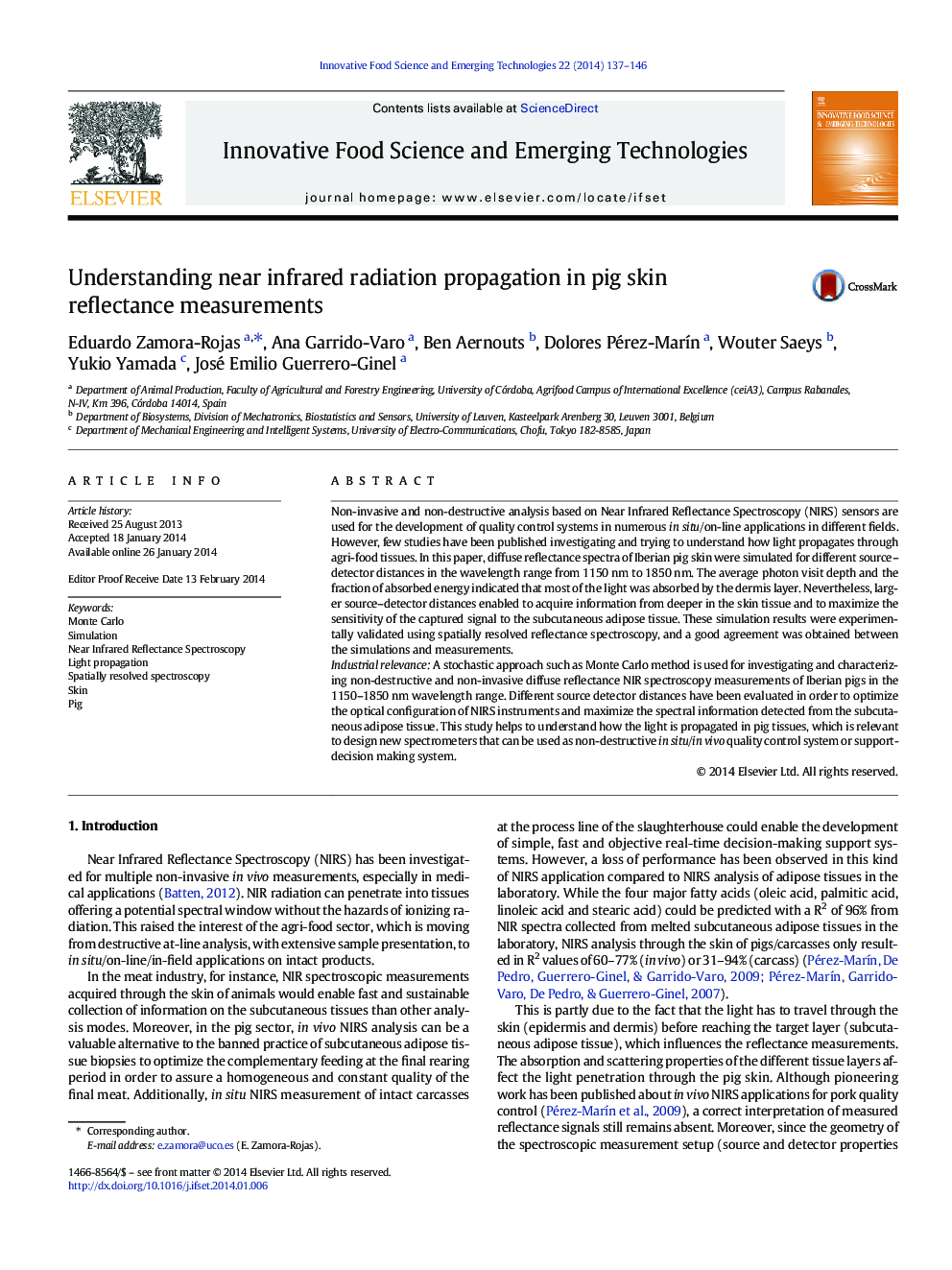| کد مقاله | کد نشریه | سال انتشار | مقاله انگلیسی | نسخه تمام متن |
|---|---|---|---|---|
| 2086630 | 1545544 | 2014 | 10 صفحه PDF | دانلود رایگان |
• A Monte Carlo approach was used for simulating diffuse reflectance NIR measurements.
• Larger source–detector distances enabled going deeper in pig skin tissue.
• Most of the NIR absorption was due to dermis layer.
• Spatially resolved spectroscopy showed good agreement with simulation results.
Non-invasive and non-destructive analysis based on Near Infrared Reflectance Spectroscopy (NIRS) sensors are used for the development of quality control systems in numerous in situ/on-line applications in different fields. However, few studies have been published investigating and trying to understand how light propagates through agri-food tissues. In this paper, diffuse reflectance spectra of Iberian pig skin were simulated for different source–detector distances in the wavelength range from 1150 nm to 1850 nm. The average photon visit depth and the fraction of absorbed energy indicated that most of the light was absorbed by the dermis layer. Nevertheless, larger source–detector distances enabled to acquire information from deeper in the skin tissue and to maximize the sensitivity of the captured signal to the subcutaneous adipose tissue. These simulation results were experimentally validated using spatially resolved reflectance spectroscopy, and a good agreement was obtained between the simulations and measurements.Industrial relevanceA stochastic approach such as Monte Carlo method is used for investigating and characterizing non-destructive and non-invasive diffuse reflectance NIR spectroscopy measurements of Iberian pigs in the 1150–1850 nm wavelength range. Different source detector distances have been evaluated in order to optimize the optical configuration of NIRS instruments and maximize the spectral information detected from the subcutaneous adipose tissue. This study helps to understand how the light is propagated in pig tissues, which is relevant to design new spectrometers that can be used as non-destructive in situ/in vivo quality control system or support-decision making system.
Journal: Innovative Food Science & Emerging Technologies - Volume 22, April 2014, Pages 137–146
